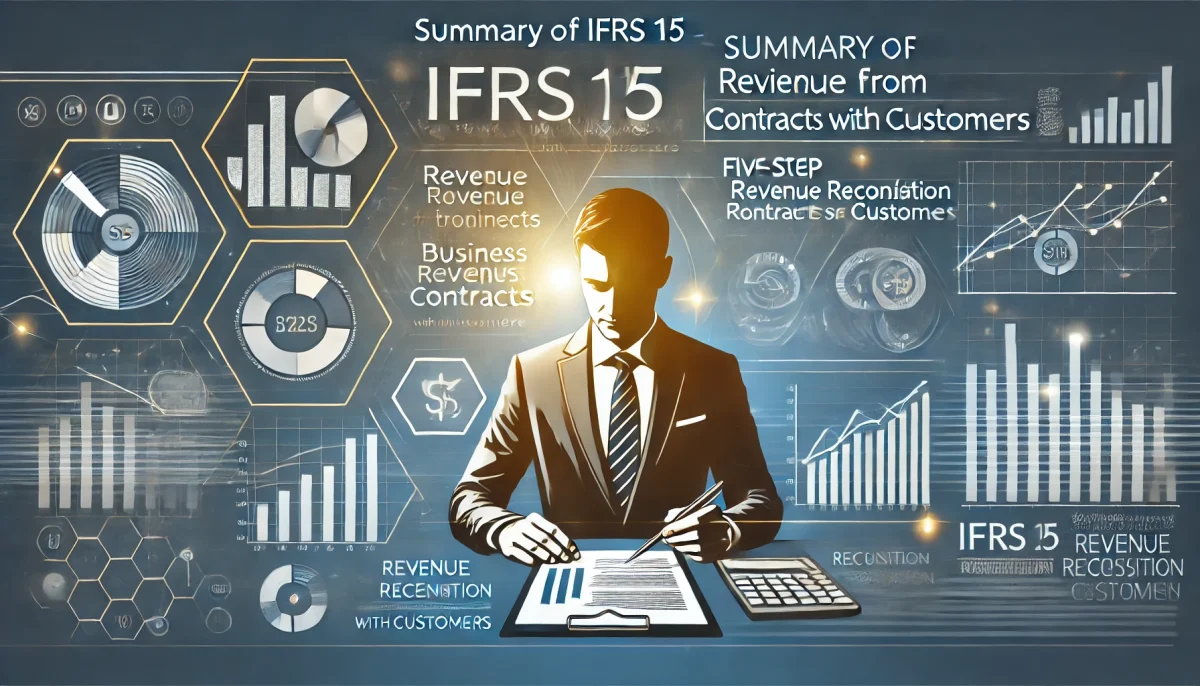“🎉Welcome! Today, we’re breaking down IFRS 15 – Revenue from Contracts with Customers, a key accounting standard that impacts how companies recognize revenue. Whether you’re an accountant, a business owner, or a finance student, this guide will help you master IFRS 15. Let’s get started!”
📘 [SECTION 1: What is IFRS 15?]
“So, what exactly is IFRS 15? It’s the International Financial Reporting Standard for recognizing revenue from customer contracts. IFRS 15 ensures companies recognize revenue when goods or services are delivered, not just when cash is received. It replaces previous standards like IAS 18 and IAS 11 with a single, comprehensive framework.”
🧩 [SECTION 2: The 5-Step Model of IFRS 15]
💡 “The core of IFRS 15 is its 5-Step Model for recognizing revenue. Let’s break it down:”
✅ Step 1: Identify the Contract with a Customer
- A contract is an agreement that creates enforceable rights and obligations.
- Example: A mobile phone provider signs a 12-month service contract with a customer.
✅ Step 2: Identify Performance Obligations
- Performance obligations are the promises to transfer goods or services.
- Example: In a phone contract, the phone and the monthly service are separate obligations.
✅ Step 3: Determine the Transaction Price
- This is the total amount of consideration the company expects to receive.
- Example: £600 total for the phone and service, including discounts or incentives.
✅ Step 4: Allocate the Transaction Price to Performance Obligations
- The price must be divided based on the relative standalone selling prices.
- Example: £400 allocated for the phone and £200 for the monthly service.
✅ Step 5: Recognize Revenue When Each Obligation is Satisfied
- Revenue is recorded when control of the good or service passes to the customer.
- Example: Phone revenue at delivery, and service revenue monthly.
💼 [SECTION 3: Practical Examples of IFRS 15]
💡 “Let’s see how IFRS 15 applies in real life:”
📌 Example 1: Software Company
- A software firm sells a license with 1 year of support. Under IFRS 15, they split the revenue: part for the license at delivery and part for support over the year.
📌 Example 2: Construction Company
- A construction firm builds an office and recognizes revenue over time as the project progresses, using a percentage of completion method.
🚨 [SECTION 4: Key Challenges and Pitfalls]
💼 “While IFRS 15 improves clarity, it also brings challenges, including:”
🚫 Identifying Performance Obligations: Complex bundled contracts can be tricky.
🚫 Estimating Variable Consideration: Refunds, bonuses, or penalties can complicate revenue recognition.
🚫 Allocating Discounts Correctly: Mistakes can lead to inaccurate revenue reporting.
✅ Tip: Use clear contracts and work with your finance team to track performance obligations carefully.
📊 [SECTION 5: Benefits of IFRS 15]
“Despite the challenges, IFRS 15 offers significant benefits:”
💼 Consistent Revenue Reporting: Across industries and markets.
📈 Better Transparency: Investors can compare companies more easily.
💰 Improved Financial Insights: More accurate profit reporting over time.
“And that’s your quick guide to IFRS 15! Whether you’re preparing for an audit, an exam, or a financial report, mastering these principles is crucial.”
💬 Got questions about IFRS 15? Drop them in the comments, and we’ll answer them!
#IFRS15 #RevenueRecognition #Accounting #Finance #Business #AccountingStandards #FinancialReporting


